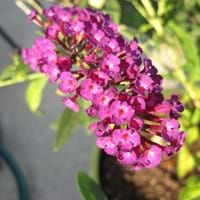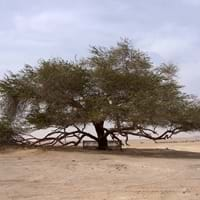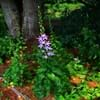Life Span
Perennial
Perennial
Type
Flowering Plants, Shrubs
Tree
Origin
Africa, America, Asia
Southwestern United States
Types
Lockinch, Petite Indigo, White Profusion
Prosopis chilensis, Prosopis juliflora
Habitat
Along Railroads, River side, Roadsides
Desert, Dry areas
USDA Hardiness Zone
5-10
6-9
Sunset Zone
H1, 2a, 2b, 3a, 3b, 4, 5, 6, 7, 8, 9, 10, 11, 12, 13, 14, 15, 16, 17, 18, 19, 20, 21, 22, 23, 24
Not Available
Habit
Arching/Fountain-shaped
Arching/Fountain-shaped
Flower Color
Blue, Pink, Purple, Red, White
Yellow
Flower Color Modifier
Not Available
Bicolor
Fruit Color
Not Available
Tan
Leaf Color in Spring
Gray Green
Blue Green
Leaf Color in Summer
Gray Green, Light Green
Blue Green
Leaf Color in Fall
Gray Green, Light Green, Yellow green
Blue Green
Leaf Color in Winter
Not Available
Not Available
Leaf Shape
Egg-shaped
Compound
Plant Season
Fall, Spring, Summer, Winter
Spring
Sunlight
Full Sun, Part sun, Partial shade
Full Sun
Type of Soil
Loamy, Sandy, Well drained
Clay, Loam, Sand
The pH of Soil
Neutral, Slightly Acidic, Slightly Alkaline
Acidic, Neutral, Alkaline
Soil Drainage
Well drained
Well drained
Tolerances
Drought, Pollution, Salt, Soil Compaction
Drought, Salt
Where to Plant?
Ground, Pot
Ground
How to Plant?
Seedlings, Stem Planting, Transplanting
Grafting, Seedlings
Plant Maintenance
Medium
Medium
Watering Requirements
Form a Soil ring to water efficiently, Water Deeply, Water twice a day in the initial period
Keep ground moist
In Summer
Lots of watering
Ample Water
In Spring
Moderate
Moderate
In Winter
Average Water
Ample Water
Soil pH
Neutral, Slightly Acidic, Slightly Alkaline
Acidic, Neutral, Alkaline
Soil Type
Loamy, Sandy, Well drained
Clay, Loam, Sand
Soil Drainage Capacity
Well drained
Well drained
Sun Exposure
Full Sun, Part sun, Partial shade
Full Sun
Pruning
Cut or pinch the stems, Prune for shortening long shoots, Prune if you want to improve plant shape, Prune ocassionally, Remove damaged leaves, Remove dead or diseased plant parts, Remove deadheads, Remove shoots
Prune in early spring, Remove all watersprouts, Remove dead leaves
Fertilizers
All-Purpose Liquid Fertilizer
Use nitrogen rich soil
Pests and Diseases
Downy mildew, Leaf spot, Spider mites
Armored scales, Candidula scale, Flatheaded borers, Mealybugs, Mesquite girdler, Mesquite scale, Oldman longhorn, Roundheaded borers, Stem gall rust
Plant Tolerance
Drought
Drought, Salt
Flower Petal Number
Single
Not Available
Fragrant Bark/Stem
No
Yes
Foliage Texture
Medium
Fine
Foliage Sheen
Matte
Matte
Invasive
Sometimes
Sometimes
Attracts
Butterflies, Hummingbirds
Birds
Allergy
Vomiting
Asthma, Rhinitis
Aesthetic Uses
Showy Purposes
Not Used For Aesthetic Purpose
Beauty Benefits
Not Available
Improve hair condition
Environmental Uses
Air purification
Air purification
Medicinal Uses
Not Available
Conjuctivitis, Emetic, Eye Problems, Headache, Laxative, Pain in gums, Stomach aliments, Sunburn
Part of Plant Used
Flowers, Leaves
Inner Bark, Leaves, Sap
Other Uses
Showy Purposes, Used as Ornamental plant
Used as a dye, Used As Food, Used for its medicinal properties, Wood is used for making furniture
Used As Indoor Plant
No
No
Used As Outdoor Plant
Yes
Yes
Garden Design
Edging, Feature Plant, Foundation
Shade Trees, Street Trees
Botanical Name
Buddleia davidii
PROSOPIS glandulosa
Common Name
Butterfly Bush, Summer Lilac, Butterflybush
Mesquite
In Hindi
Butterfly Bush
उत्तर पश्चिमी अमरीका का एक फलीदार पेड
In German
Schmetterlingsstrauch
Mesquite
In French
buisson de papillon
Mesquite
In Spanish
arbusto de las mariposas
mezquite
In Greek
Butterfly Μπους
Είδος μιμόζας
In Portuguese
arbusto de borboleta
Mesquite
In Polish
Butterfly Bush
Mesquite
In Latin
papilio rubo
Mesquite
Phylum
Spermatophyta
Magnoliophyta
Class
Dicotyledonae
Magnoliopsida
Family
Scrophulariaceae
Fabaceae
Clade
Angiosperms, Asterids, Eudicots
Angiosperms, Eudicots, Rosids
Tribe
Not Available
Not Available
Subfamily
Not Available
Not Available
Number of Species
Not Available
Importance of Butterfly Bush and Mesquite Tree
Want to have the most appropriate plant for your garden? You might want to know the importance of Butterfly Bush and Mesquite Tree. Basically, these two plants vary in many aspects. Compare Butterfly Bush and Mesquite Tree as they differ in many characteristics such as their life, care, benefits, facts, etc. Every gardener must at least have the slightest clue about the plants he wants to plant in his garden. Compare their benefits, which differ in many ways like facts and uses. The medicinal use of Butterfly Bush is Not Available whereas of Mesquite Tree is Conjuctivitis, Emetic, Eye Problems, Headache, Laxative, Pain in gums, Stomach aliments and Sunburn. Butterfly Bush has beauty benefits as follows: Not Available while Mesquite Tree has beauty benefits as follows: Not Available.
Compare Facts of Butterfly Bush vs Mesquite Tree
How to choose the best garden plant for your garden depending upon its facts? Here garden plant comparison will help you to solve this query. Compare the facts of Butterfly Bush vs Mesquite Tree and know which one to choose. As garden plants have benefits and other uses, allergy is also a major drawback of plants for some people. Allergic reactions of Butterfly Bush are Vomiting whereas of Mesquite Tree have Asthma and Rhinitis respectively. Having a fruit bearing plant in your garden can be a plus point of your garden. Butterfly Bush has no showy fruits and Mesquite Tree has showy fruits. Also Butterfly Bush is flowering and Mesquite Tree is not flowering . You can compare Butterfly Bush and Mesquite Tree facts and facts of other plants too.





